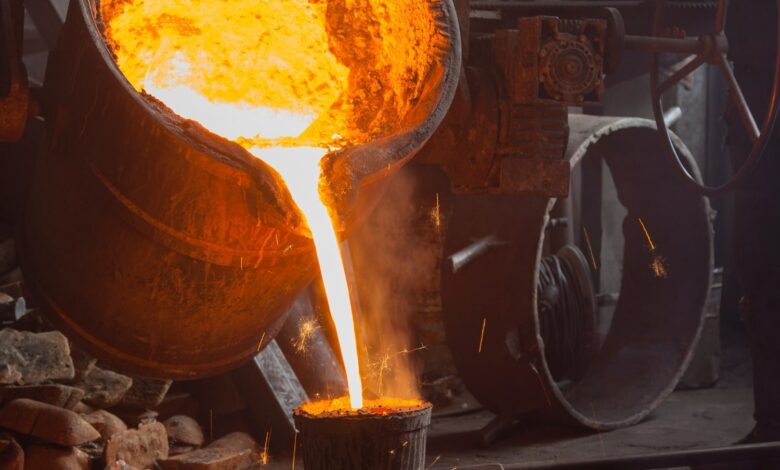Mastering the Art of Iron Casting: A Comprehensive Guide for Beginners

Iron casting is an age-old technique that has been used for centuries to create durable and intricate metal objects. From household items and tools to ornate sculptures and industrial components, the process has a wide range of applications. This guide aims to provide a detailed overview of iron casting, from the basics of the process to the essential materials and tools required, as well as step-by-step instructions for beginners.
Understanding Iron Casting
Iron casting involves pouring molten iron into a mold to create a specific shape. The mold is typically made from sand, clay, or other refractory materials that can withstand high temperatures. Once the iron cools and solidifies, the mold is removed, revealing the cast object. The primary types of iron used in casting are gray iron, ductile iron, and white iron, each with distinct properties and applications.
Materials and Tools Needed
- Iron Scrap or Pig Iron: The raw material for the casting process.
- Furnace: A device to melt the iron. Common types include cupola furnaces, electric arc furnaces, and induction furnaces.
- Molds: Typically made from sand, clay, or investment materials. Green sand molds are popular for their reusability and ease of preparation.
- Crucible: A container used to hold and pour the molten iron.
- Tongs and Ladles: Tools for handling the crucible and pouring the molten iron.
- Protective Gear: Safety goggles, heat-resistant gloves, aprons, and face shields to protect against the extreme heat and molten metal.
- Pattern: A model of the object to be cast, used to create the mold cavity.
- Flux: A substance added to the molten iron to remove impurities.
Step-by-Step Guide to Iron Casting
Step 1: Pattern Making
The first step in iron casting is creating a pattern, which is a replica of the final object. The pattern can be made from wood, plastic, or metal. It should be carefully designed to account for shrinkage during cooling and to ensure the final cast meets the desired dimensions and shape.
Step 2: Preparing the Mold
Once the pattern is ready, it is used to create the mold. For sand casting, the pattern is placed in a molding box and packed with sand. The sand is then compacted and shaped around the pattern. Once the sand is firm, the pattern is removed, leaving a cavity in the shape of the object to be cast. If using a multi-part mold, the different sections are carefully assembled to form the complete mold.
Step 3: Melting the Iron
The next step is to melt the iron in a furnace. The iron scrap or pig iron is placed in the crucible and heated to a temperature of around 1,500 degrees Celsius (2,732 degrees Fahrenheit). Flux is added to help remove impurities and produce cleaner molten iron. Once fully melted, the iron is ready to be poured.
Step 4: Pouring the Molten Iron
With the molten iron ready, it is carefully poured into the mold cavity using tongs and ladles. This step requires precision and control to ensure the molten iron fills the mold evenly and completely. It is essential to work quickly but safely, as the iron begins to cool and solidify upon contact with the mold.
Step 5: Cooling and Solidification
After pouring, the iron needs to cool and solidify within the mold. This process can take several hours, depending on the size and complexity of the cast object. Patience is crucial during this step to ensure the iron sets properly without any defects.
Step 6: Removing the Cast
Once the iron has fully solidified, the mold is broken away to reveal the cast object. For sand molds, the sand is simply brushed or washed away. The cast object may require some cleaning and finishing to remove any residual sand, mold material, or excess metal.
Step 7: Finishing
The final step involves cleaning and finishing the cast object. This may include grinding, sanding, or machining to achieve the desired surface texture and dimensions. Any additional features, such as holes or threads, can be added at this stage.
Conclusion
Iron casting is a fascinating and rewarding process that combines art, science, and craftsmanship. By understanding the basic principles and following the steps outlined in this guide, beginners can successfully create their own iron cast objects. With practice and experience, you can explore more advanced techniques and projects, unlocking the full potential of iron casting in your creative and industrial endeavors.


